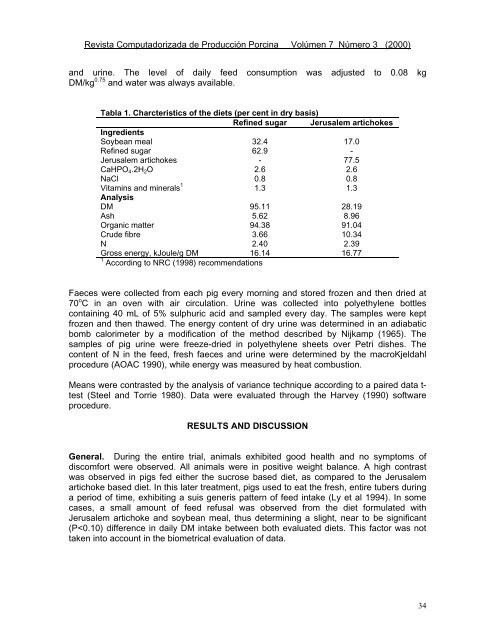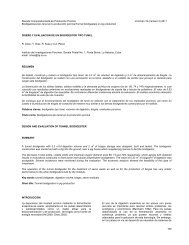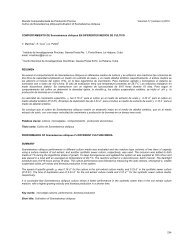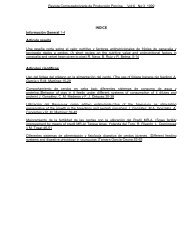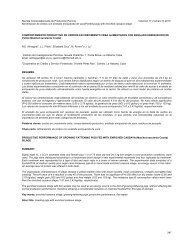Descargar Revista - Instituto de Investigaciones Porcinas (IIP)
Descargar Revista - Instituto de Investigaciones Porcinas (IIP)
Descargar Revista - Instituto de Investigaciones Porcinas (IIP)
You also want an ePaper? Increase the reach of your titles
YUMPU automatically turns print PDFs into web optimized ePapers that Google loves.
<strong>Revista</strong> Computadorizada <strong>de</strong> Producción Porcina Volúmen 7 Número 3 (2000)<br />
and urine. The level of daily feed consumption was adjusted to 0.08 kg<br />
DM/kg 0.75 and water was always available.<br />
Tabla 1. Charcteristics of the diets (per cent in dry basis)<br />
Refined sugar Jerusalem artichokes<br />
Ingredients<br />
Soybean meal 32.4 17.0<br />
Refined sugar 62.9 -<br />
Jerusalem artichokes - 77.5<br />
CaHPO4.2H2O 2.6 2.6<br />
NaCl 0.8 0.8<br />
Vitamins and minerals 1<br />
1.3 1.3<br />
Analysis<br />
DM 95.11 28.19<br />
Ash 5.62 8.96<br />
Organic matter 94.38 91.04<br />
Cru<strong>de</strong> fibre 3.66 10.34<br />
N 2.40 2.39<br />
Gross energy, kJoule/g DM 16.14 16.77<br />
1 According to NRC (1998) recommendations<br />
Faeces were collected from each pig every morning and stored frozen and then dried at<br />
70 o C in an oven with air circulation. Urine was collected into polyethylene bottles<br />
containing 40 mL of 5% sulphuric acid and sampled every day. The samples were kept<br />
frozen and then thawed. The energy content of dry urine was <strong>de</strong>termined in an adiabatic<br />
bomb calorimeter by a modification of the method <strong>de</strong>scribed by Nijkamp (1965). The<br />
samples of pig urine were freeze-dried in polyethylene sheets over Petri dishes. The<br />
content of N in the feed, fresh faeces and urine were <strong>de</strong>termined by the macroKjeldahl<br />
procedure (AOAC 1990), while energy was measured by heat combustion.<br />
Means were contrasted by the analysis of variance technique according to a paired data ttest<br />
(Steel and Torrie 1980). Data were evaluated through the Harvey (1990) software<br />
procedure.<br />
RESULTS AND DISCUSSION<br />
General. During the entire trial, animals exhibited good health and no symptoms of<br />
discomfort were observed. All animals were in positive weight balance. A high contrast<br />
was observed in pigs fed either the sucrose based diet, as compared to the Jerusalem<br />
artichoke based diet. In this later treatment, pigs used to eat the fresh, entire tubers during<br />
a period of time, exhibiting a suis generis pattern of feed intake (Ly et al 1994). In some<br />
cases, a small amount of feed refusal was observed from the diet formulated with<br />
Jerusalem artichoke and soybean meal, thus <strong>de</strong>termining a slight, near to be significant<br />
(P


